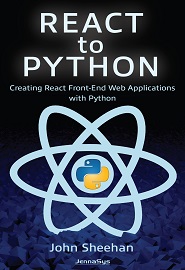
English | 2021 | ISBN: 978-1736574706 | 418 Pages | EPUB, MOBI | 22 MB
Learn to create responsive front-end web applications in Python using the React and Material-UI JavaScript libraries without having to program in JavaScript! How is this possible? By using the Transcrypt transpiler that turns your Python code into JavaScript.
Let’s face it, JavaScript is the way of the web, and Python doesn’t run in a web browser. BUT, just like the popular TypeScript language that gets compiled into JavaScript to run in a web browser, Transcrypt does the same thing for Python. Because of the way Transcrypt maps Python data types and language constructs to JavaScript, your Python code is able to directly utilize the full ecosystem of JavaScript libraries that exist, taking advantage of existing web application technologies rather than trying to replace them.
Using a Python-centric viewpoint, this book outlines the developer tools and software libraries needed to develop front-end web applications with Python, specifically focusing on the popular React library and open-source Material-UI library that includes a collection of React components based on Google’s Material Design user interface specification. In addition to chapters covering how to implement specific application features, in a learn-by-doing fashion, the last section of the book walks you through building a fully functional example application from start to finish, giving you an idea of how everything fits together.
While this book isn’t necessarily meant for beginning programmers, if you are already familiar with Python and want to create front-end web applications but don’t want to have to delve into the complexities of a full JavaScript ecosystem, don’t want to have to keep switching back and forth between languages for the same full-stack application, or if you just don’t care to program in JavaScript in general, the approach taken in this book gives you another option using Python.
HomepageResolve the captcha to access the links!